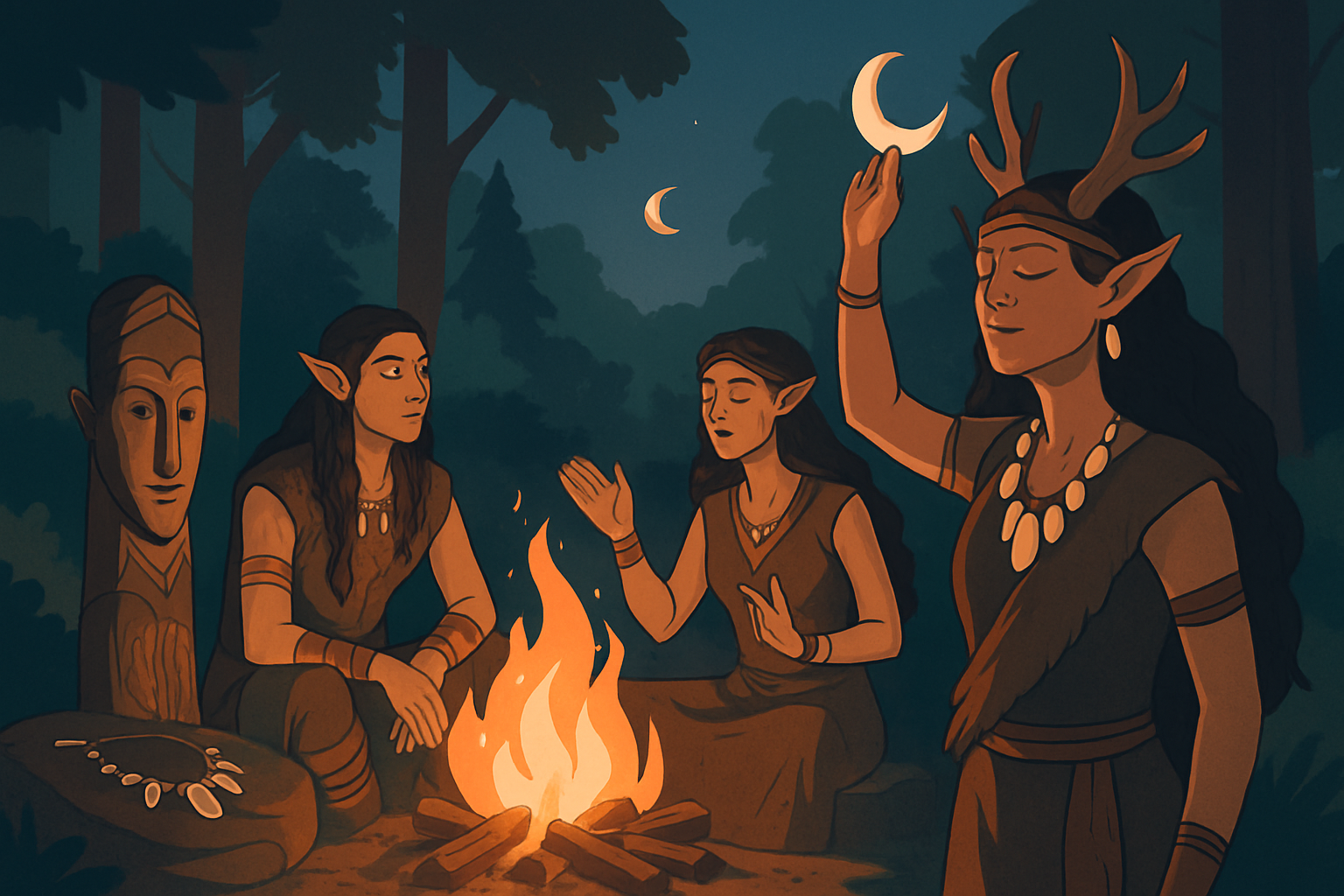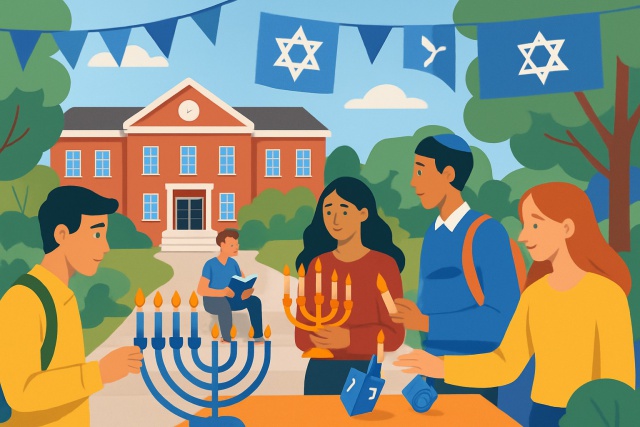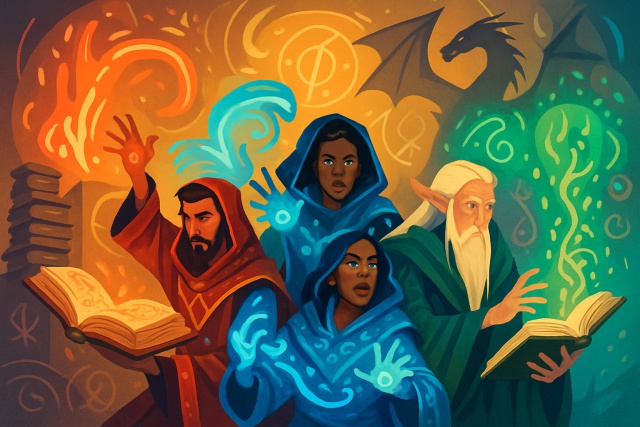
What Makes Kagonesti Elves Unique Among Elven Kinds?


The Kagonesti elves represent a unique branch of the wider elven family best known for their deep bond with nature and distinctive cultural practices. Their lifestyle is all about embracing the wild.
So, Just Who Are the Kagonesti Elves Anyway?
Kagonesti elves are some of the oldest elf groups around. They traditionally make their homes deep in thick forests and wild untamed places like the Dalelands and the vast High Forest. Unlike their city-savvy or magic-obsessed cousins, these elves lead simpler lives and stay closely in tune with nature’s rhythms. They generally stick to small clans or tribes and cherish a way of life that focuses on living in harmony with the world around them.
Kagonesti Within the Colorful Tapestry of Elven Groups
The elven race generally breaks down into a few distinct groups each with its own flavor. The Moon Elves for instance have their heads pretty firmly in the clouds and focus on magic and rich cultural traditions. Meanwhile the Sun Elves impress everyone with their grand cities and deep wells of arcane knowledge. Then you have the Kagonesti often dubbed wild or wood elves because of their strong bond with nature and their more laid-back social ways.
| Trait | Kagonesti Elves | Moon Elves | Sun Elves |
|---|---|---|---|
| Homeland | Forests and wild lands like High Forest | Found scattered about, often near magical hubs | Grand cities such as Evermeet |
| Appearance | Lean and rugged, sporting earthy tones that blend right into the woods | Graceful and ethereal, often with fair skin that seems to glow softly | Elegant features crowned with lustrous golden hair |
| Social Structure | Informal clans and tribes, keeping it casual and close-knit | Communities with clear structure and well-defined hierarchies | Strongly aristocratic and strictly hierarchical, with no shortage of pomp |
| Worldview | Practical individuals, deeply rooted in nature and the here-and-now | Curious minds rich in culture and always hungry to learn more | Disciplined types, laser-focused on arcane arts, sometimes to a fault |
| Magic Use | Limited magic use, mostly leaning on nature magic when it shows up | Usually bursting with magical talent | Skilled masters who handle their magic like seasoned pros |
| Lifestyle | Nomadic or semi-nomadic hunter-gatherers who follow the rhythm of the wild | Settled lifestyles filled with scholarship and artistry | Courtly living among scholars and magicians, where every day is a performance |
The Lifestyle and Culture of the Kagonesti Elves
If you’ve ever found yourself lost in the wilds, hoping to catch a glimpse of the elusive Kagonesti elves, you’re in for a treat. These forest-dwelling folk have a way of blending seamlessly with the trees, their lives intertwined with the rhythms of nature in a way that almost feels like second nature to them. Their culture isn’t just about survival; it’s a deep, almost spiritual connection to the land they call home. Over time, you start to see how their traditions and daily habits are shaped, not just by the forest, but by an enduring respect—and sometimes fierce loyalty—to the wilds around them.
The Kagonesti elves live in close harmony with the forest around them almost as if the trees themselves whisper secrets only they can hear. Their communities are usually semi-nomadic and move with the seasons and the ebb and flow of game and resources—as much out of necessity as a love for the changing landscape. Skilled hunters and gatherers, they rely heavily on their intimate knowledge of the wild they have honed over countless moons. Life for them is simple but rich and grounded in a deep respect for nature that feels almost sacred.
- Kagonesti traditions revolve around life tucked away in the forest and boast a deep understanding of plants and animals that feels almost magical.
- Instead of centralized kingdoms their society is about clans and tight-knit family groups where everyone knows your name and your place.
- They hold nature spirits and ancient woodland beings in the highest regard, treating them like wise guardians who keep the delicate balance of life in check.
- Oral storytelling is their lifeblood. Elders pass down history and wisdom through the generations, often weaving tales that stick with you longer than you’d expect.
- Their crafts often feature wood carving and natural dyes as well as clever use of tools or weapons made from whatever the forest provides.
Our Ever-Changing Bond with Nature and the Environment
Kagonesti elves view the natural world as an extension of themselves, carrying a kind of sacredness that naturally demands respect and careful stewardship. They practice sustainable hunting with a keen eye, paired with an impressive knowledge of herbalism that plays a vital role in their medicine and rituals.
"Walking the forest paths often feels like strolling shoulder to shoulder with the spirits themselves. Each tree seems to breathe with its own kind of quiet life, and every babbling stream whispers some ancient wisdom — it’s clear we’re caretakers here, not conquerors." – Elder Mirath, Kagonesti shaman
Physical Traits and Capabilities A Closer Look
Kagonesti elves usually sport a tougher, leaner build than their refined cousins. Their physique is carved out by the rugged demands of life deep in dense forests. Their sharp eyesight and keen hearing aren’t just for show—they are essential tools that help them slip silently through shadows and keep tabs on prey with precision.
- Kagonesti elves tend to be a bit shorter than other elves which gives them a leg up when darting through dense forests with surprising speed.
- Their skin tones usually range from earthy browns to gentle greens allowing them to blend into their surroundings so effortlessly you would almost miss them if you were not paying close attention.
- They have got seriously impressive tracking skills. They can tail prey and navigate unfamiliar terrain like it’s second nature.
- Their senses, especially hearing and sight, are finely tuned to catch even the faintest hints in the environment.
- Moving quietly and staying hidden is second nature to them because of survival lessons drilled in from a young age that make them elusive beyond belief.
Social Structure and Governance
Let's dive into how societies are organized and run—the backbone of any community, really. From the leaders at the top to the everyday people, the way social structures and governance play out can make all the difference between harmony and chaos. You will find a fascinating array of systems, each with its own quirks and strengths, shaping how decisions are made and power flows. Whether formal or informal, these frameworks guide social interactions and keep the wheels turning, often in ways we do not even notice right away.
Kagonesti society tends to revolve around tight-knit family clans or tribal groups rather than formal kingdoms or courts. Their leadership relies on informal respect earned through wisdom and life experience rather than a rigid hierarchy. When making decisions, the community pulls together with the elders guiding everyone toward consensus.
The Role of Elders and Shamans
Elders and shamans hold a deeply respected place in Kagonesti clans. Elders keep history, oral traditions and laws. People often turn to their advice when facing important decisions because there is comfort in their wisdom. Shamans serve as spiritual guides who bridge the physical world with the forest spirits in ways that feel magical. They lead rituals to maintain harmony and heal the sick. They also support the community during times of change or hardship and quietly carry its wellbeing.
Language Arts and Traditions A Rich Tapestry Worth Exploring
The Kagonesti speak a dialect finely tuned by their forest home. It is packed with vivid words for every plant, animal and natural event you could imagine. They mostly keep their history and laws alive through oral tradition and weave them into storytelling and song that feel as natural as rustling leaves. Their art is also rooted deeply in nature. It showcases intricate wood carvings, bone jewelry and ceremonial dances that bring the spirit of the forest and their ancestors to life.
- Seasonal festivals highlight the changing moods of the forest by celebrating the ebb and flow of life and the bounty of each harvest.
- Storytelling circles keep alive treasured legends about brave heroes and mischievous spirits in the wild world around them.
- Skilled craftsmen lovingly carve intricate wood and bone pieces that capture the essence of nearby plants and animals with remarkable detail.
- Songs and dances carry heartfelt ritual meanings, whether calling for protection or offering thanks.
- The language is vivid and richly descriptive, deeply rooted in the forest’s embrace and bursting with metaphors inspired by the natural world.

A peaceful Kagonesti elven camp illustrating their deep connection with nature and traditional forest culture.
Elves and Their Relations with Other Races and Their Own Kinds
Kagonesti elves tend to maintain a careful yet practical bond with other races like humans, dwarves and various elven clans. While they’re often lumped together as primitive or reclusive, they keep the lines open. They trade goods, swap knowledge and occasionally team up when the chips are down for mutual defense. They’re fiercely protective of their homelands which can stir up some territorial friction but more often than not they avoid throwing punches over nothing.
- They swap forest goods like herbs, handmade weapons and furs for metal tools and other must-have essentials—a rustic barter system that’s stood the test of time.
- Territorial spats flare up when settlers edge in or neighboring groups push their boundaries too far for comfort.
- Cultural exchanges happen during peaceful get-togethers and foster a genuine sense of respect and understanding between communities.
- Kagonesti clans often team up with other races to pool their strengths and fend off larger threats such as invading forces or dangerous creatures lurking about.
Things People Often Get Wrong About Kagonesti Elves (and Why It’s Time to Set the Record Straight)
Many outsiders often jump to the conclusion that the Kagonesti elves are primitive or hostile simply because of their forest frontier way of life and cautious approach to strangers. But that’s just scratching the surface. This view overlooks their rich social systems, profound wisdom, and lively cultural traditions. It’s unfair that they’re often labeled uneducated or closed off when their expertise in herbalism, survival skills and oral history clearly shows a sharp intellect and adaptable mind.
- Boasting expert survival skills and a profound understanding of the forest that’s truly impressive.
- Function as a rich, intricate form of education far from a sign of ignorance.
- Tend to be cautiously inclusive, leaning toward alliances built on mutual respect rather than shutting themselves off completely.
- Often go way beyond what you’d expect just from their wild, rugged appearance.
Why It’s Actually Pretty Key to Understand Kagonesti Elves
Getting a grip on the unique identity and culture of the Kagonesti elves adds a new layer to any dive into elven lore—whether you are spinning a story or rolling dice at the gaming table. When you appreciate their distinct lifestyle and values, it invites a deeper, genuine connection to fantasy settings and steers clear of tired stereotypes.





